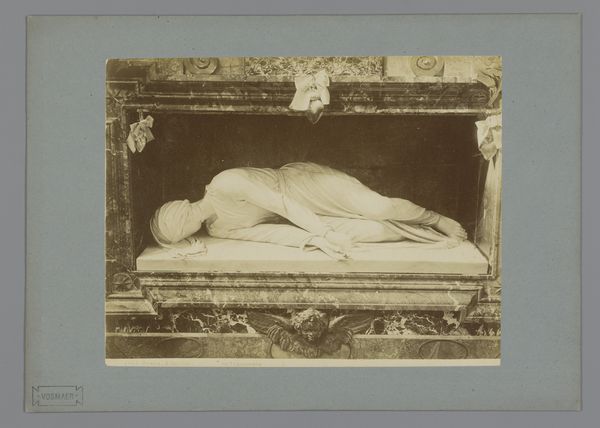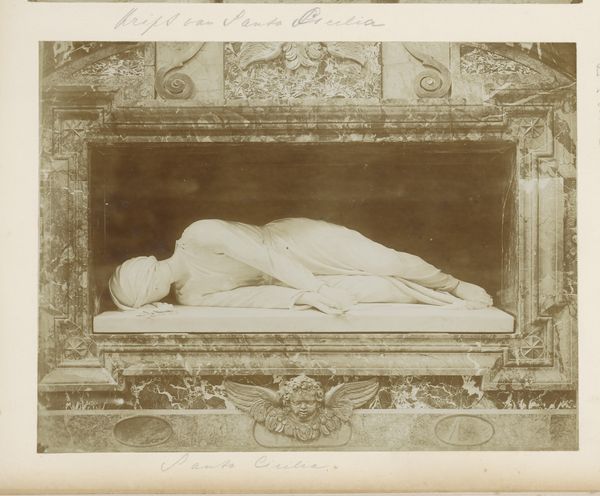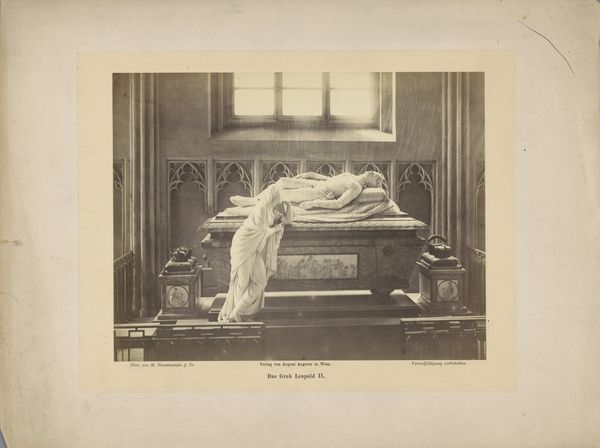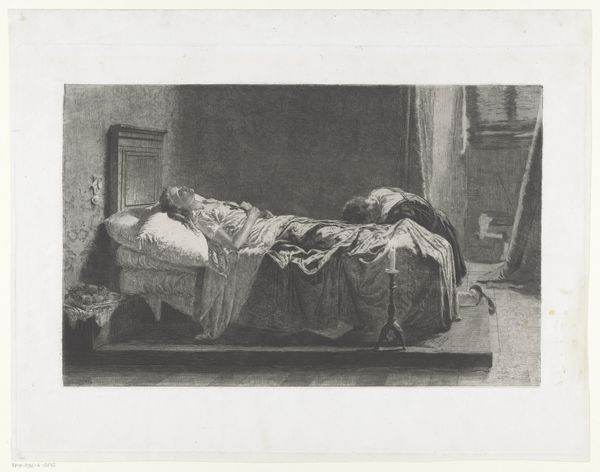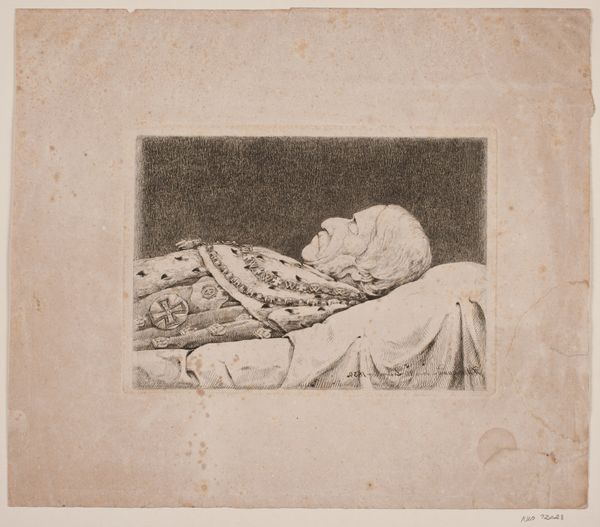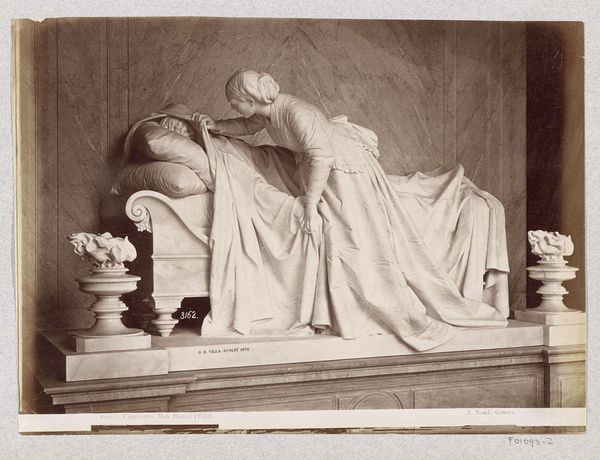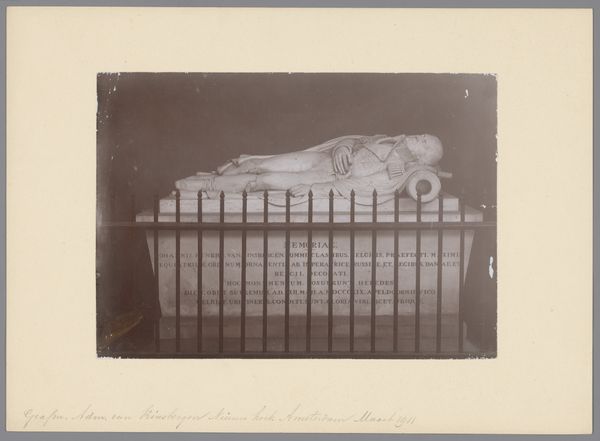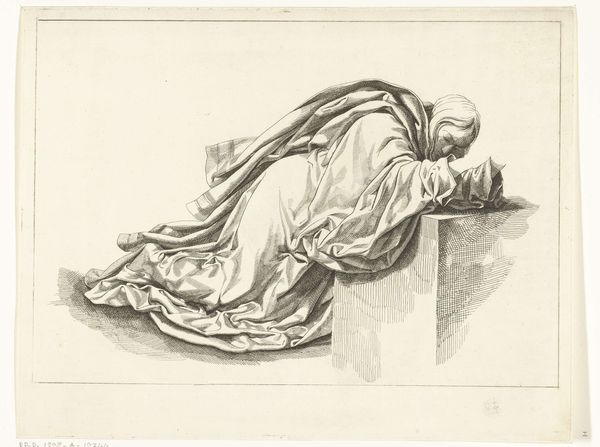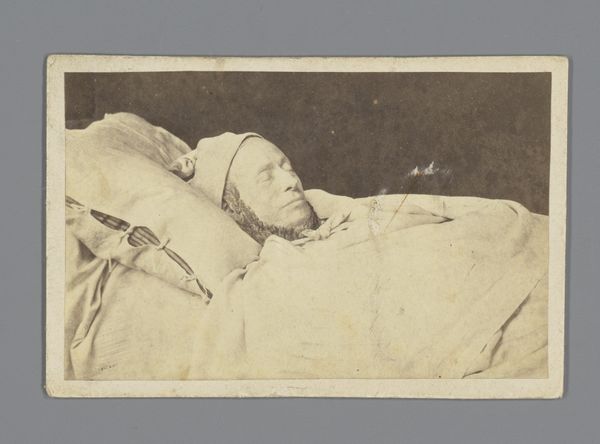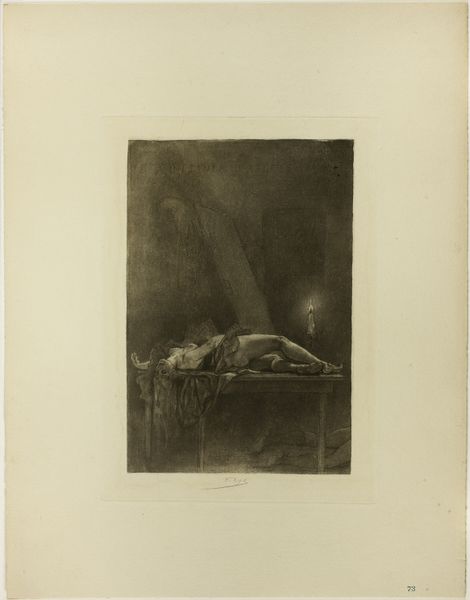
Marmeren beeld van Sint-Cecilia in de Santa Cecilia in Trastevere te Rome, Italië 1851 - 1900
0:00
0:00
photography, sculpture, marble
#
portrait
#
classical-realism
#
charcoal drawing
#
photography
#
sculpture
#
marble
Dimensions: height 215 mm, width 268 mm
Copyright: Rijks Museum: Open Domain
Curator: Here we see a photograph capturing a marble sculpture of Saint Cecilia in Santa Cecilia in Trastevere, Rome. It dates from the latter half of the 19th century. Editor: The composition immediately strikes me. There's a beautiful diagonal created by the saint's reclining figure, set against the dark, rectilinear frame. It imbues the scene with a sense of quiet drama, of resignation. Curator: Indeed, the sculpture and its photographic reproduction speak to the era’s fascination with religious iconography and its role in shaping civic virtue and morality. Note how this depiction would influence public perceptions of female saints and their embodiment of piety and suffering. Editor: And how effectively the anonymous photographer has captured the texture of the marble! The drapery seems to flow and cling, almost as if it were fabric and not carved stone. The subtle gradations of light give incredible volume to the figure. Curator: Consider, too, that the photographic reproduction democratizes access to high art. Individuals unable to journey to Rome could now contemplate this artwork in their own homes, furthering the Church’s message and reinforcing cultural values. It's the art world's own early form of digital media. Editor: Absolutely. The downward tilt of the head is powerful. Her face is hidden, creating a sense of universal grief, a shared humanity that transcends any particular narrative. She's physically present, yet psychologically removed. It brings her martyrdom into present-day view. Curator: Ultimately, the artistic choices made, the availability of photography, the subject itself all contribute to understanding 19th century's construction and deployment of religious ideals. Editor: And for me, this remains a stark, emotionally charged rendering of mortality itself, using a restricted palette to express the immensity of feeling and thought that art evokes.
Comments
No comments
Be the first to comment and join the conversation on the ultimate creative platform.
